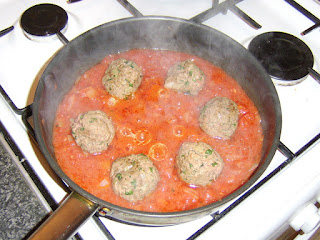Cuisine: Argentine
Website: http://www.saltaparrilla.com.sg/
Rating For The Meal: 8.5/10
We were a little sick of the all-too-common mexican and brazilian joints in Singapore. That is why we were overjoyed when we remembered Salta. An argentine restaurant that a friend of ours recommended before. We arrived a little late, and extremely hungry. What greeted us when we first stepped in was a cool and well airconditioned restaurant with a nice woody setting. We observed it (for all times sake), brushed it off and impatiently looked through the menu. That was when it occured to us that the menu and restaurant interior seemed more european than latin american (not surprising as argentina has an overwhelmingly white majority). While deciding what to order, the waiter came and placed a variety of breads in a basket in front of us, along with a complimentary meat pate covered in what seemed like pomegranate molasses. It tasted really good. Placed on the table too were 3 condiments (which we constantly used later on with the meal). They were the argentine form of salsa verde (a salty blend of green herbs and oil), chimmichuri (a spicy condiment made with oil and chilli peppers) and salsa criollo (what seems to be a mixture of chopped vegetables tosses in a sour vinegar mixture).
We started our meal with a Matambre (stuffed beef roulade with mushrooms served with mixed salad and balsamic reduction). It tasted amazing. It kind of reminded us of chinese cold cuts. Except that this one had an egg inside and was served with bell peppers, olives, and a tasty spiced mayonnaise. Next up was empanadas which is basically like a western version of curry puff. Except that they use a more chewy and buttery pastry. We savoured 4 flavours of empanadas. Corn with cream, ham and cheese, spinach, and beef with capsicum. They all tasted amazing. Most of us agree however, that the beef with capsicum empanada tasted the most ordinary out of all the 4.
We then moved on to pasta. Besides italy, argentina also has a huge amount of pasta dishes as most people from argentina are either partly or fully descended from the italian immigrants that poured into the country hundreds of years ago. We had a ricotta and spinach ravioli tossed in pistachio pesto, as well as a ham and cheese sorrentini with basil in a tomato sauce. The ravioli tasted great and had a nice bite to it. And the sorrentini (which looks like a giant tortellini) fared just as good. The ham and cheese sorrentini filling tasted like what you can find in any american ham and cheese premix. Except that it was much more flavourful. And the tomato sauce that drenched the sorrentini was just tart to the right level. The sauce may be a little on the oily side but it tastes just like what anyone can find in a decent italian restaurant.
Dessert was a gluten free chocolate cake served with 2 ice creams. One is banana, and the other vanilla bean. We were quite torn in opinion between the dessert as some loved it and some hated it. Therefore, we can only say that this dessert is a matter of personal opinion and preference.
It was a joy dining in Salta. And to top it off, it was not even that pricey. For a meal of this calibre shared between 5 of us, the bill only came up to $40 per person. A very decent price for a meal like this from our point of view.




























